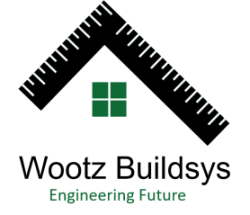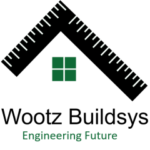
In modern architecture and construction, prefab buildings have emerged as a revolutionary solution, heralding a new era in sustainable and efficient living. These innovative structures are reshaping the way we think about residential spaces, offering a plethora of benefits that encompass environmental sustainability, cost-effectiveness, and rapid construction. The world of prefab buildings, exploring their advantages, design versatility, and their role in promoting a more sustainable future.
The Rise of prefab buildings
Prefab buildings are manufactured off-site in a factory-controlled environment before being transported to their final location for assembly. This method of construction differs from traditional building techniques, where structures are built entirely on-site. Prefab buildings come in various forms, ranging from modular homes constructed from pre-made modules to panelized homes built using pre-fabricated panels.
Advantages of Prefab buildings
1. Environmental Sustainability: One of the most significant advantages of prefab homes is their eco-friendly nature. The controlled manufacturing process minimizes material waste, reduces energy consumption, and promotes recycling. Additionally, prefab buildings can incorporate sustainable building materials and energy-efficient features, further reducing their environmental footprint.
2. Cost-Effectiveness: prefab buildings are often more cost-effective compared to traditional homes. The streamlined construction process reduces labor costs and construction time, translating to overall cost savings for homeowners. Additionally, the use of standardized components and materials helps minimize expenses associated with waste and errors.
3. Rapid Construction: prefab buildings can be constructed much faster than traditional homes. Since the majority of the building components are manufactured off-site, on-site construction time is significantly reduced. This rapid construction process allows homeowners to move into their new homes in a fraction of the time it would take with traditional construction methods.
4. Design Versatility: Prefab buildings offer a high degree of design flexibility and customization options. Homeowners can choose from a wide range of floor plans, layouts, and architectural styles to suit their preferences. Additionally, prefab buildings can easily accommodate various add-ons and modifications, allowing for future expansion or renovations.
5. Quality Control: Prefab buildings undergo rigorous quality control measures during the manufacturing process. This ensures that each component meets high-quality standards and specifications before being assembled on-site. As a result, Prefab buildings often boast superior craftsmanship and durability compared to traditionally built homes.
The Future of prefab buildings
As the demand for sustainable and efficient housing solutions continues to grow, prefab buildings are poised to play a significant role in shaping the future of residential construction. With advancements in technology and design, prefab buildings are becoming increasingly sophisticated, offering a wide range of amenities and features that rival traditional homes.
From eco-friendly materials to smart home technology integration, prefab buildings are evolving to meet the needs and preferences of modern homeowners. Whether it’s a cozy cottage in the countryside or a sleek urban loft, prefab buildings offer endless possibilities for creating sustainable and efficient living spaces. These structures can be designed to be reused for other site location if required like labour hutments, site offices etc making them more environment friendly.
Conclusion
prefab buildings represent a new frontier in residential construction, Low rise construction. Temporary construction offering a sustainable, cost-effective, and efficient alternative to traditional homes. With their environmental benefits, rapid construction times, and design versatility, prefab buildings are revolutionizing the way we live and build. As we continue to embrace innovation and sustainability in the housing industry, prefab buildings are sure to remain at the forefront of modern architecture and design, shaping the future of sustainable and efficient living.
FAQ’s Frequently Asked Questions
1. What exactly are prefab buildings?
A prefab building, short for prefabricated buildings, is a type of Low rise dwelling that is constructed off-site in a factory-controlled environment before being transported to its final location for assembly. These homes are built using pre-made modules or panels, allowing for faster construction and reduced on-site labor.
2. Are prefab buildings cheaper than traditional homes?
In many cases, prefab buildings can be more cost-effective than traditional homes. The streamlined construction process and reduced on-site labor often result in lower overall costs. However, the final cost of a prefab building will depend on factors such as size, design, materials, and location.
3. How long does it take to build a prefab building?
The construction timeline for a prefab building can vary depending on factors such as the complexity of the design, the size of the home, and the availability of materials. However, prefab buildings are typically constructed much faster than traditional homes, with some models being ready for occupancy in just a few weeks.
4. Can prefab buildings be customized?
Yes, prefab buildings can be customized to meet the specific needs and preferences of homeowners. Many prefab buildings manufacturers offer a variety of floor plans, layouts, and design options to choose from. Additionally, homeowners can often make modifications or upgrades to personalize their home.
bandar togel


